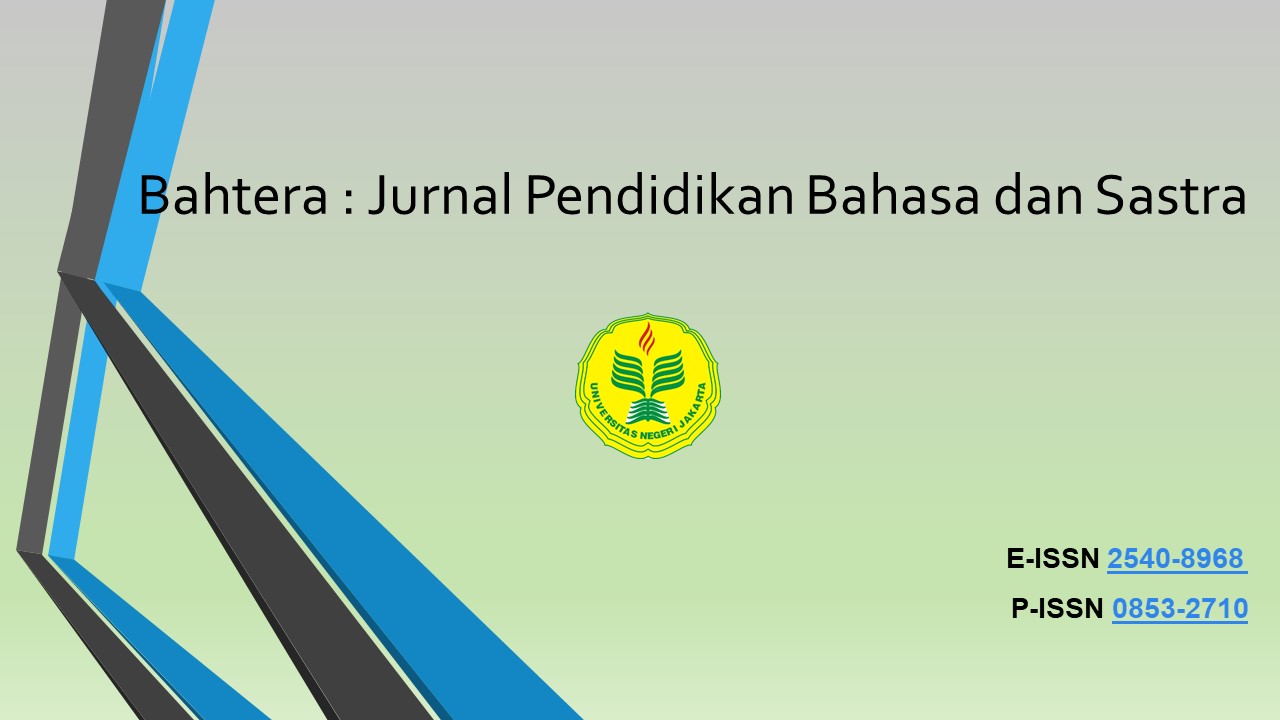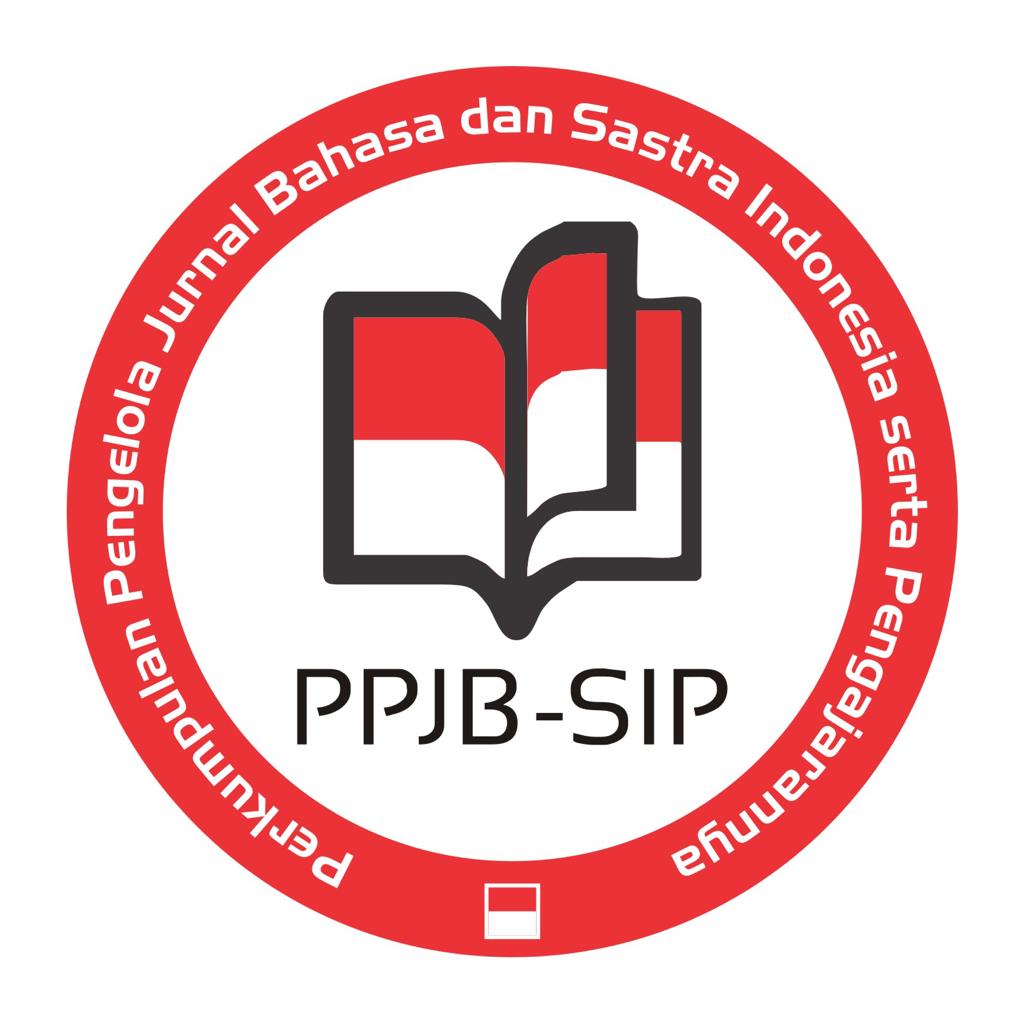Analisis Kohesi Leksikal dalam Novel Sesuk Karya Tere Liye
DOI:
https://doi.org/10.21009/bahtera.241.03Keywords:
Cohesion, Lexical, Novel, DiscourseAbstract
The objective of this study is to describe and analyze the forms of lexical cohesion, specifically repetition, antonyms, synonyms, equivalence, collocations, and hyponyms, found in the novel Sesuk by Tere Liye. The research employs a qualitative method. The focus of the study is the markers of lexical cohesion in the novel Sesuk by Tere Liye. Data collection techniques used in this study are library research and note-taking. The findings indicate the presence of lexical cohesion forms, including 18 instances of repetition, 5 instances of antonyms, 2 instances of synonyms, 4 instances of equivalence, 2 instances of collocations, and 1 instance of hyponyms. In total, the lexical cohesion in the novel Sesuk by Tere Liye comprises 32 instances
References
Agustian, & Maisarah, I. (2023). Analysis Of The Use Of Lexical Cohesioan in Leo Tolstoy’s Short Stories. ICOTEL, 2015, 141–154.
Al-Tufayl, Q. A. D., & Salman, H. S. (2023). A Stylistic Analysis of Lexical, Cohesion and Context Features of the Literary Styles in the Wonderful Story of Henry Sugar’ by Roald Dahl and “The Little Lantern” by Ghassan Kanafani: A Contrastive Study. Ra Journal of Applied Research, 09(01), 12–19. https://doi.org/10.47191/rajar/v9i1.03
Annaafi, H., & Sabardila, A. (2023). Kohesi Leksikal Dan Gramatikal pada Wacana "Ganjar Pranowo” dalam Kompas.com. Mahakarya: Jurnal Mahasiswa Ilmu Budaya, 4(2), 37–46.
Badan Pengembangan dan Pembinaan Bahasa. (2017). Kamus Besar Bahasa Indonesia. Kementerian Pendidikan dan Kebudayaan.
Isnanda, R. (2015). "Peran Pengajaran Sastra dan Budaya dalam Pembentukan Karakter Siswa Sekolah Dasar". Jurnal Gramatika: Jurnal Penelitian Pendidikan Bahasa Dan Sastra Indonesia, 1(2), 174–182.
Juliyanti, F. D., & Sabardila, A. (2023). "Kohesi Gramatikal dan Leksikal dalam Novel Cinta dalam Kardus Karya Raditya Dika & Salman Aristo". Stilistika: Jurnal Pendidikan Bahasa Dan Sastra, 16(1), 29–40.
Kroeger, P. R. (2022). Analyzing Meaning, An Introduction to Semantics and Pragmatics. Language Science Press. http://langsci-press.org/catalog/144
Lafamane, F. (2020). Kajian Stilistika (Komponen Kajian Stilistika).
Mandia, I. N. (2017). "Kohesi dan Koherensi Sebagai Dasar Pembentukan Wacana yang Utuh". Soshum: Jurnal Sosial Dan Humaniora, 7(2), 175–188.
Masduki, M. (2013). Relasi Makna (Sinonimi, Antonimi, dan Hiponimi) dan Seluk Beluknya. Prosodi, 7(1).
Ninsiana, W. (2021). Kohesi Gramatikal, Kajian Terjemahan pada Bidding Document (Vol. 1, Issue 1). Sulur Pustaka.
Rahardi, R. K. (2006). Dimensi-Dimensi Kebahasaan: Aneka Masalah Bahasa Indonesia Terkini. Erlangga.
Santoso, A. D. (2019). Apresiasi Prosa Fiksi. PT Penerbit Intan Pariwara.
Simaremare, J., Santoso, G., Rantina, M., & Asbari, M. (2023). "Sastra Menjadi Pedoman Sehari-hari Telaah Singkat Karya Sastra Menurut Para Ahli". Jurnal Pendidikan Transformatif, 2(3), 57–60.
Susiati, S. (2020). Semantik: Teori Semantik, Relasi Makna, Marked, dan Unmarked.
Downloads
Published
How to Cite
Issue
Section
License
Copyright (c) 2025 Bahtera: Jurnal Pendidikan Bahasa dan Sastra

This work is licensed under a Creative Commons Attribution 4.0 International License.
License & Copyright
This work is licensed under a Creative Commons Attribution 4.0 International License.










